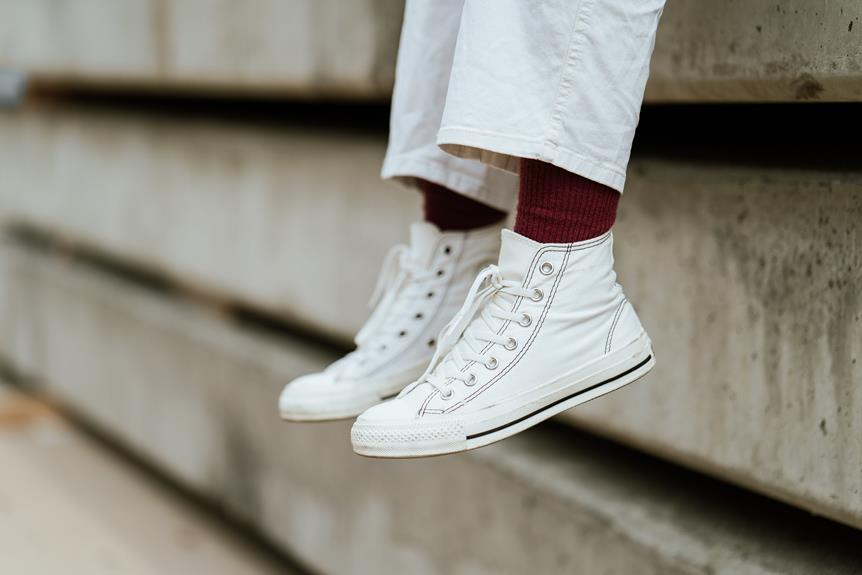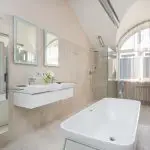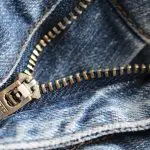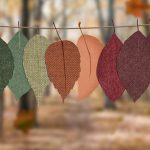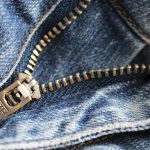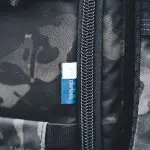So, you think pants are just a simple garment? Think again! Understanding the different parts of pants and what they are made of can give you a whole new appreciation for this essential piece of clothing.
From the waistband to the fabric for the legs, the pockets, zippers, buttons, and even the lining, each component serves a specific function and is crafted from various materials. Whether it's the durability of denim, the stretch of spandex, or the luxurious feel of silk lining, mastering the knowledge of what pants are made of can elevate your understanding of fashion and garment construction.
Let's delve into the fascinating world of pant parts and materials!
Key Takeaways
- The waistband and closure of pants are important for support, fit, and adjustability. They can include features such as sturdy elastic waistbands, drawstrings, strong stitching, and different types of zippers and buttons.
- The fabric used for the legs of pants can vary depending on the desired style and functionality. Options include cotton for breathability, wool for warmth, polyester for durability, silk for a luxurious feel, and denim for a rugged and casual look.
- Pockets in pants should be constructed with both functionality and style in mind, using wear-resistant materials, reinforced stitching, and various pocket styles for different purposes.
- Lining can enhance comfort and durability, with options such as polyester, viscose, or silk. Full linings provide a smooth fit and added durability, while partial linings reduce weight and increase breathability. Proper construction techniques ensure a clean and polished finish.
- Trim and embellishments can be added to pants using various fabric types, such as lace or leather, to enhance the look and style. Techniques like embroidery, beading, and appliqué can add visual interest and texture. Other options include sequins for sparkle, ribbons for decorative elements, and beads for unique patterns or designs.
Waistband
First, check for a sturdy, flexible waistband that comfortably hugs your waist without pinching or slipping. The waistband is a crucial part of pants, providing support and ensuring a proper fit. Many pants feature an elastic waistband, which allows for some stretch and flexibility, accommodating changes in body shape throughout the day. The elastic should be durable and retain its shape after repeated wear and washing.
Additionally, some pants incorporate a drawstring in the waistband, allowing for adjustable tightness to suit individual preferences. This drawstring can be especially useful in athletic or loungewear, where a secure fit is essential for comfort and performance. When examining the waistband, ensure that the stitching is strong and secure, as this area undergoes a lot of stress during wear.
A well-constructed waistband not only enhances comfort but also contributes to the overall aesthetic and functionality of the pants.
Fabric for Legs
To begin, you'll find that the fabric for the legs of pants is typically a durable and flexible material designed to provide comfort and mobility throughout various activities. This fabric is carefully chosen to ensure that the pants aren't only stylish but also functional.
Here are the key aspects of the fabric for the legs:
- Fabric Construction and Durability: The fabric used for the legs of pants is often constructed with durability in mind. It commonly includes sturdy weaves such as twill, denim, or gabardine, which are known for their resistance to wear and tear. These fabrics are woven tightly to withstand frequent movement and maintain their shape over time.
- Stretch Fabric for Comfort: Many modern pants incorporate stretch fabric into the leg material to enhance comfort and flexibility. This stretch fabric, often a blend of materials like spandex or elastane with traditional fabric, allows for ease of movement without compromising the durability of the pants. It ensures that the pants move with you, providing a comfortable and unrestricted feel.
- Moisture-Wicking Properties: Some leg fabrics also feature moisture-wicking properties, drawing sweat away from the skin to keep you dry and comfortable during physical activities.
The fabric for the legs of pants is a carefully engineered combination of durability and comfort, offering a balance between resilience and ease of movement.
Pockets
When designing pants, pockets are constructed with functionality and style in mind to provide convenient storage for your belongings while maintaining a sleek appearance. Pocket construction is crucial for durability, and this is achieved through the use of strong and wear-resistant materials such as denim, twill, or canvas for the pocket linings. The stitching and seams are also reinforced to withstand the weight of items and frequent use.
Pocket styles are designed for various functionalities. For instance, the classic five-pocket style commonly found in jeans includes front pockets for small items, coin pockets, and back pockets for larger items. Additionally, cargo pants feature large, expandable pockets on the thighs for carrying more significant items. The placement and depth of pockets are carefully considered to ensure easy access and security for your belongings. Some pants even incorporate hidden pockets for discreet storage of valuables.
The combination of durable construction and thoughtful design results in pockets that aren't only practical but also add to the overall aesthetic of the pants. Whether you need ample storage for outdoor activities or a seamless look for formal attire, pocket construction and style play a vital role in enhancing the functionality and appearance of pants.
Zippers and Buttons
For a secure closure and easy fastening, zippers and buttons are essential components of pants, complementing the functionality of pockets with their own distinctive features.
When it comes to zippers, maintenance is key to ensuring their longevity. Regularly lubricating the zipper teeth with a specialized wax or silicone-based lubricant can prevent sticking and prolong the zipper's lifespan. Additionally, if a zipper becomes damaged, it's often more cost-effective to have it repaired by a professional rather than replacing the entire garment.
As for buttons, they come in a variety of materials, such as metal, plastic, and horn, each offering a unique aesthetic and durability. If a button becomes loose or falls off, knowing how to sew on a replacement button is a valuable skill that can extend the life of your pants.
Understanding different zipper styles, such as coil, plastic molded, and metal tooth zippers, allows you to choose the most suitable one for your garment. Similarly, being knowledgeable about button materials can help you select pants with buttons that align with your preferences for both style and practicality.
Lining
The lining, an often overlooked yet crucial component, enhances the comfort and durability of your pants. Lining material plays a significant role in the overall quality of your garment. Common lining materials include polyester, viscose, and silk.
Polyester is widely used due to its durability and affordability, while viscose offers a breathable and lightweight option. Silk, although luxurious, is less common due to its high cost.
The construction techniques of the lining are equally important. A full lining, where the entire interior of the pants is covered, provides a smooth, comfortable fit and adds durability to the garment. Partial linings, on the other hand, cover only certain areas, often the front or back, reducing weight and increasing breathability.
Additionally, techniques such as bagging, where the lining is sewn separately and attached by hand, ensure a clean and polished interior finish.
Understanding the lining material and construction techniques can help you make informed decisions when selecting pants, ensuring both comfort and longevity.
Trim and Embellishments
When it comes to the trim and embellishments on pants, the fabric types used for these details can vary widely. From delicate lace to sturdy leather, each fabric brings its own unique texture and aesthetic to the design.
Additionally, the techniques used to embellish pants, such as embroidery, beading, or appliqué, further add to the visual interest and style of the garment.
Fabric Types for Trim
When choosing fabric types for trim and embellishments on pants, you should consider both aesthetics and functionality. The right fabric can enhance the overall look of the pants while also providing durability and comfort. Here are some fabric choices and trim options to consider:
- Fabric Choices
- Cotton: Ideal for casual and lightweight trims.
- Satin: Adds a luxurious touch and works well for formal or evening wear pants.
- Denim: Perfect for creating a rugged and casual look, especially for jeans.
- Trim Options
- Lace: Adds a delicate and feminine touch, perfect for dressy pants.
- Leather: Provides a rugged and edgy look, suitable for adding accents to various pant styles.
- Sequins: Adds sparkle and glamour, great for special occasion or party pants.
Consider these fabric types and trim options to elevate the style and functionality of your pants.
Embellishment Techniques Used
Consider adding personality and style to your pants by exploring different embellishment techniques for trim and embellishments.
Embroidery techniques can elevate the look of your pants, adding intricate designs and patterns. Whether it's a simple floral motif or a more elaborate design, embroidery can bring a unique touch to your pants.
Another option is decorative stitching, which can be used to create eye-catching borders, add texture, or reinforce seams while also serving as a decorative element. You can experiment with contrasting thread colors or different stitch styles to achieve the desired effect.
From delicate and understated details to bold and vibrant accents, these embellishment techniques offer a wide range of possibilities to customize your pants and make a statement with your personal style.
Seam Allowances
When sewing pants, you'll need to account for seam allowances, which are the extra fabric added to the edges of pattern pieces to allow for sewing and finishing the seams. Seam allowances are crucial in creating well-constructed and durable pants. Here's what you need to know:
- Stitching Techniques and Seam Finishes: Seam allowances provide space for various stitching techniques such as topstitching, understitching, and edge stitching. They also allow for seam finishes like serging, zigzag stitching, or French seams, which contribute to the overall quality and longevity of the pants.
- Seam Construction: Proper seam allowances are essential for constructing the pants. They ensure that the seams can be sewn accurately and securely, preventing fraying and unraveling over time.
- Seam Durability: Adequate seam allowances contribute to the durability of the pants. They allow for multiple alterations and adjustments, reinforcing the seams and preventing them from weakening due to excessive strain or wear.
Understanding and implementing the correct seam allowances will significantly impact the overall quality and longevity of the pants you sew.
Frequently Asked Questions
How Do You Determine the Correct Size for a Waistband?
To determine the correct size for a waistband, measure your waist at the natural waistline. Use this measurement to find the right size on the pants label. If needed, alterations can ensure a perfect fit.
Are There Sustainable or Eco-Friendly Options for Fabric Used in Pants?
You can find sustainable options like organic cotton, hemp, and recycled polyester for eco-friendly fabrics in pants. These materials help reduce environmental impact and promote ethical production practices, making them a great choice for conscious consumers.
What Are the Different Types of Pockets and Their Purposes in Pants?
When it comes to pants, various pocket styles serve different purposes. From coin pockets for small items to cargo pockets for extra storage, the types of closures and styles of stitching can vary based on functionality and design preferences.
How Do You Choose the Right Type of Zipper for Pants?
When choosing a zipper for pants, consider different options for durability and functionality. Zipper styles can vary in their use, so select one that suits your needs. Ensure the zipper is durable and functional for long-lasting wear.
What Are Common Types of Embellishments Used on Pants and How Are They Attached?
To add flair to pants, common embellishment techniques include embroidery, studs, and patches. These are attached using various sewing methods such as hand stitching, machine sewing, or heat press. Each method offers unique design possibilities.
- Can You Dye Suede Shoes With Fabric Dye? the Answer - July 12, 2025
- How to Clean Suede Fabric Shoes: A Definitive Guide - July 12, 2025
- Everything You Need to Know About Faux Suede Fabric - July 12, 2025

